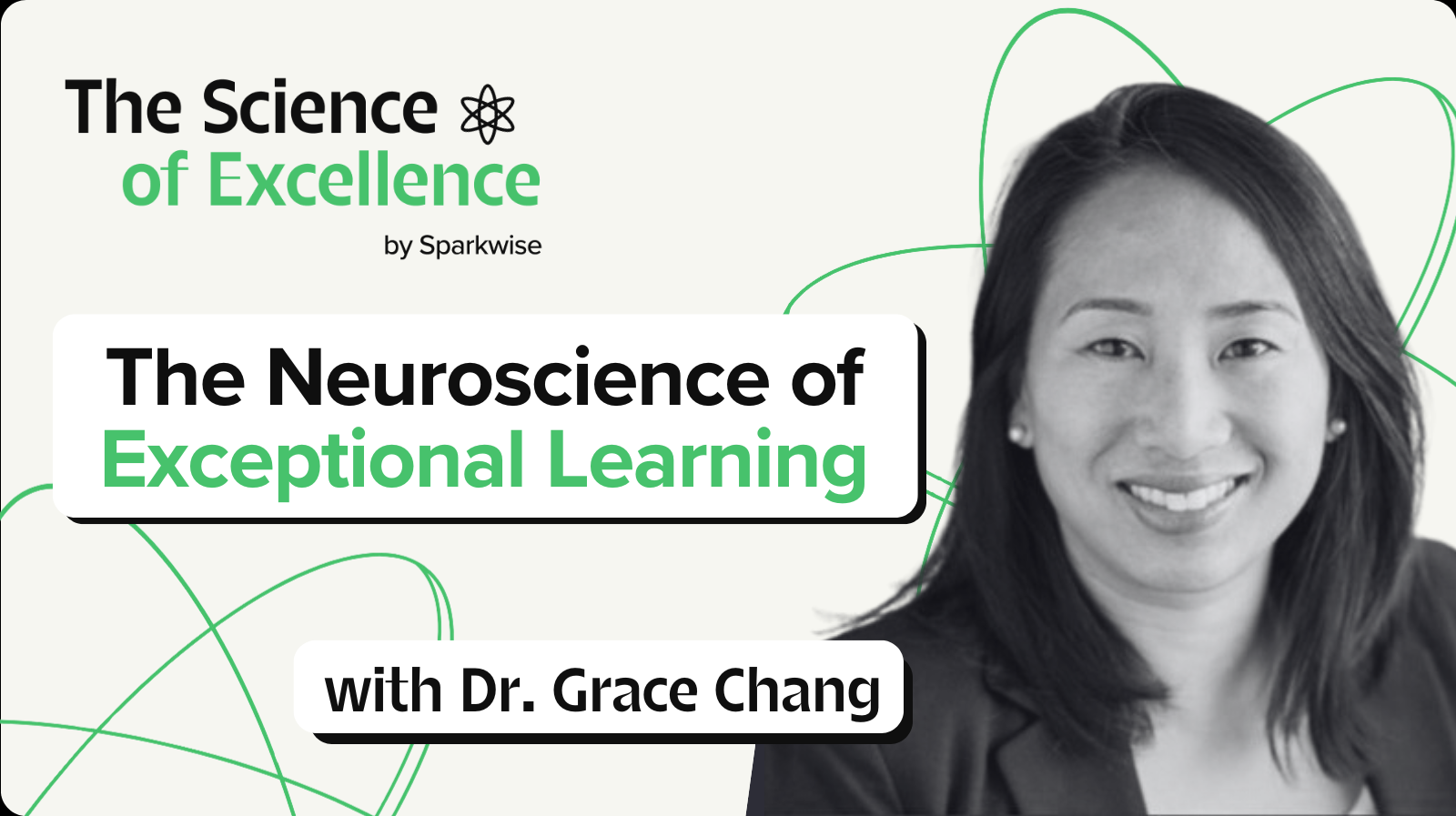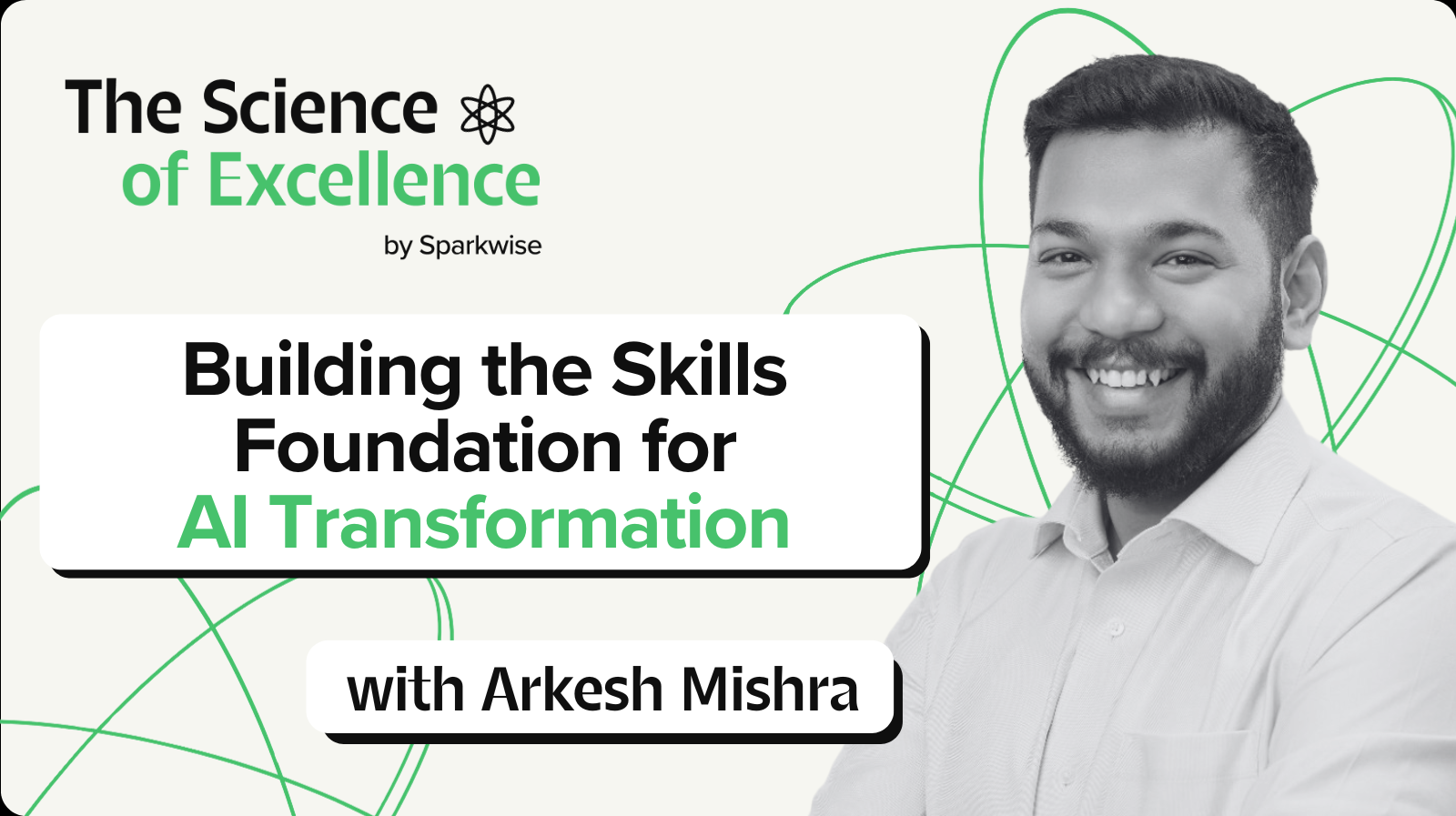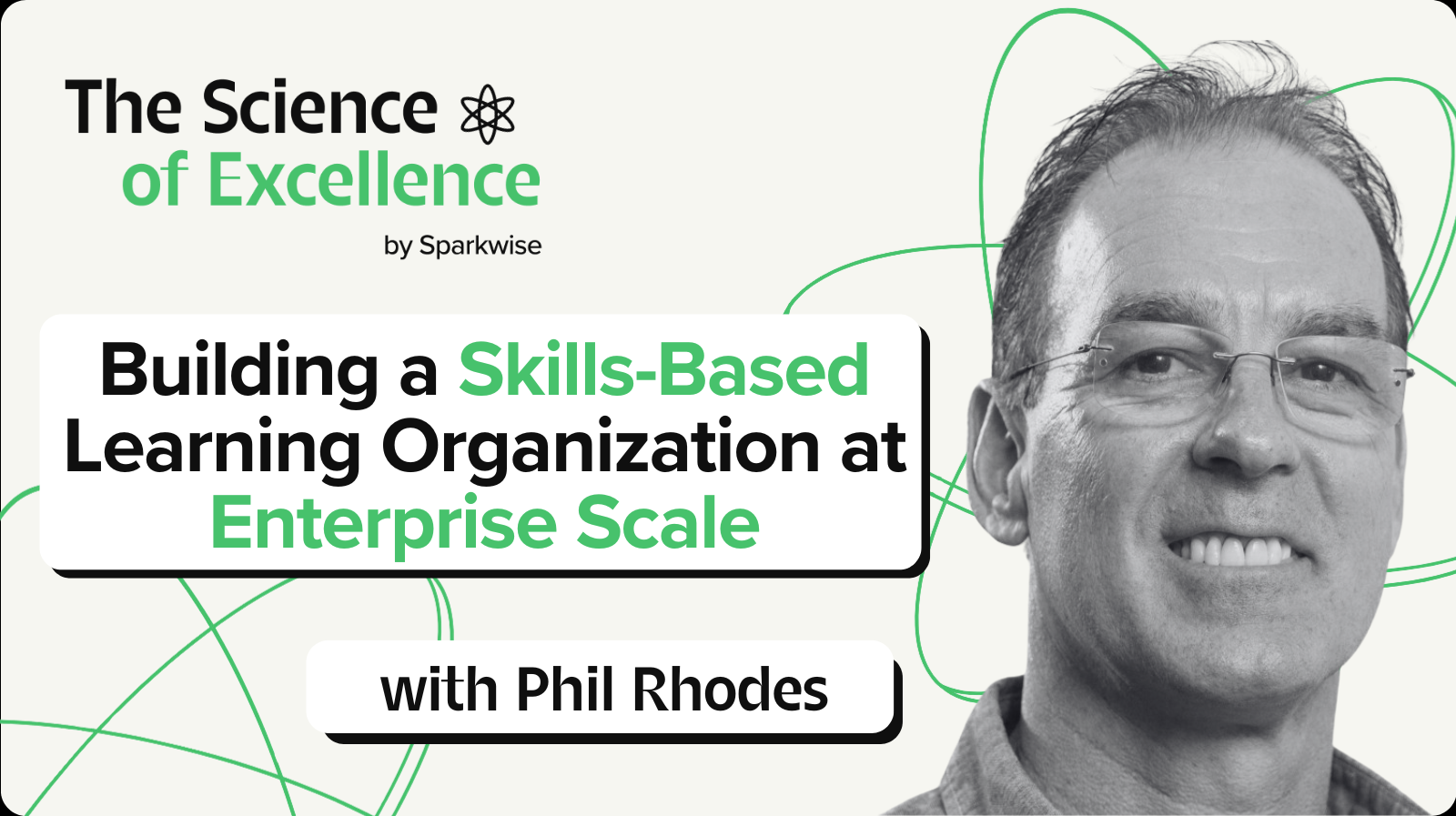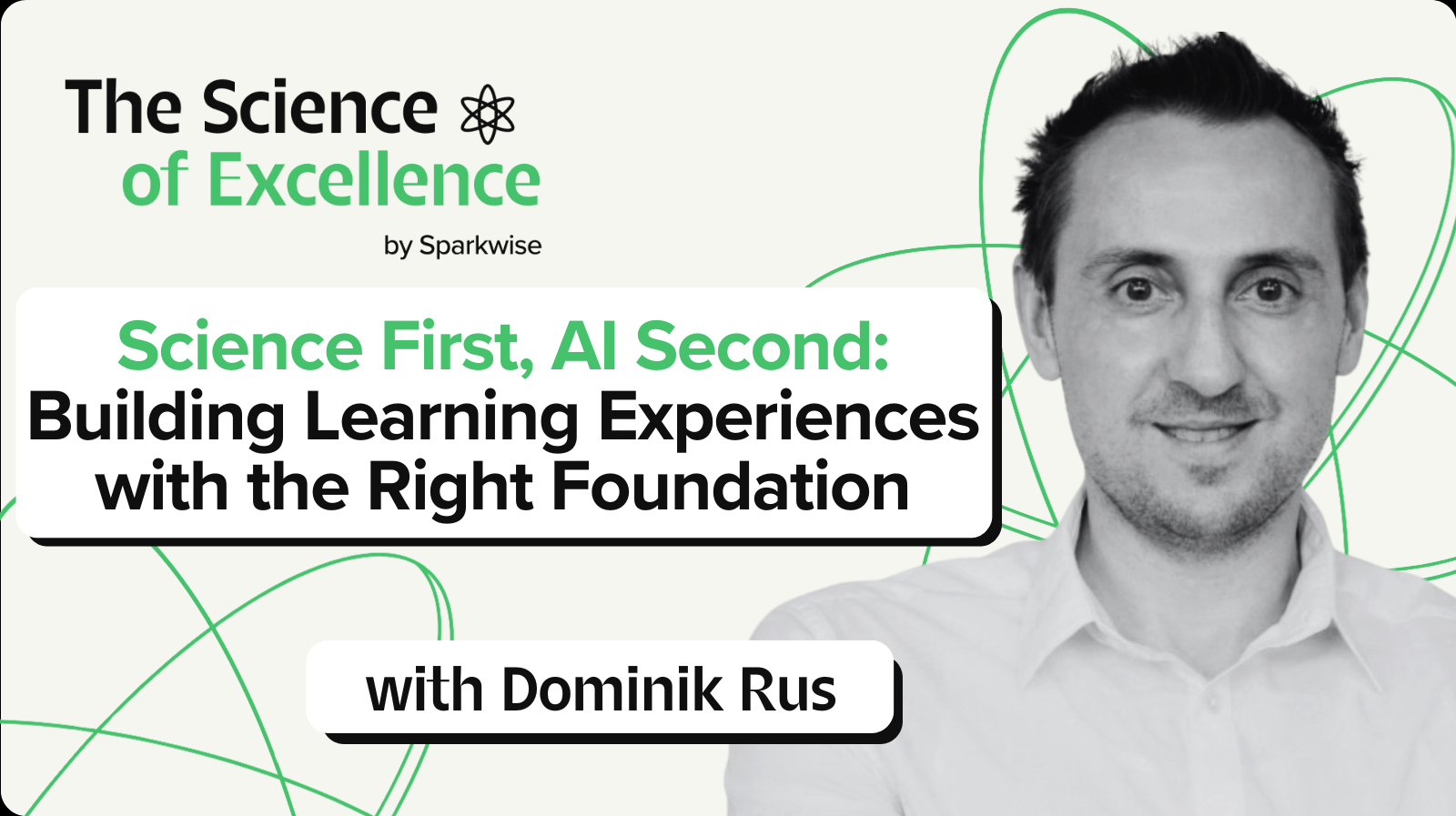In this episode of The Science of Excellence, I sat down with Allison Brotman, who leads learning at UKG where they train over 800,000 learners per year with ~95% satisfaction.
Allison shared how UKG supports learning at a massive scale through a blend of formal training, social learning, and performance support. What also stood out in our conversation was her perspective on the role that human-to-human learning plays in an AI-powered world.
These 5 insights stood out from our conversation:
- Build Wisdom Beyond Intelligence Through Human Learning
- Focus on Influence, Not Control in Social Learning
- Design Recognition Systems to Shape Behavior
- Prioritize Human Learning for High-Stakes Topics
- Ground New Technology in Learning Fundamentals
1. Build Wisdom Beyond Intelligence Through Human Learning
In Allison's Words: "Intelligence is the capacity to learn, to understand, to apply knowledge, basically the ability to do things. Intelligence is really about knowing. And then wisdom is the ability to use knowledge and experience to make decisions. Wisdom is knowing which course of action to take under which circumstances. So an AI solution is highly intelligent. It can tell you that a tomato is a fruit. But if you ask AI to make you a fruit salad, it's going to put a tomato in your fruit salad."
The intelligence versus wisdom distinction helps determine when to use human versus AI-powered learning. AI excels at intelligence—processing information, identifying patterns, solving defined problems. Humans excel at wisdom—knowing when and how to apply knowledge based on context, experience, and judgment.
This framework clarifies learning design decisions. Use AI for straightforward knowledge transfer and skill building. Use human-to-human learning for complex decision-making, institutional knowledge, and situations where learners need to understand not just what to do, but when and why to do it.
2. Focus on Influence, Not Control in Social Learning
In Allison's Words: "When you are the provider of the learning, whether that's instructor led or self-paced, even performance support, you control a lot of the variables. You get to control the content, the learning environment, the delivery, and so on. With a social learning approach, you give up a lot of that control and you have to learn how to influence instead."
Social learning requires abandoning the illusion of control. In traditional learning models, you control content, environment, and delivery. Social learning means trusting learners to guide their own development while you shape the conditions for success.
This shift feels uncomfortable because you're moving from certainty to influence. The solution is focusing on clear outcomes rather than controlling processes. Define what you want to achieve, help everyone understand that goal, then step back and let participants bring their real-world expertise to the learning experience.
3. Design Recognition Systems to Shape Behavior
In Allison's Words: "We identified the behaviors that we want to see. So we want to see problem solvers. We want to see helpers, we want to see sharers. On a weekly, monthly, and then we roll them up for annual awards. We celebrate these behaviors when we see them in our community."
Recognition systems are behavior design tools. UKG identified specific behaviors they wanted to see—problem solving, helping others, sharing knowledge—then built systematic recognition around those behaviors.
This creates psychological safety at scale. When people consistently see helpers and sharers being celebrated, they understand the community values and feel safe contributing. The recognition program becomes a cultural steering mechanism that encourages exactly the behaviors needed for effective peer learning.
4. Prioritize Human Learning for High-Stakes Topics
In Allison's Words: "We're using human-to-human learning for high stakes topics like how to run and manage payroll. So things that you want to get right and you want to make sure that the learner understands not just the surface kind of task level, but why they're doing it that way and what's going on in the background."
High-stakes learning requires human guidance. While AI can effectively teach standard procedures, human instructors become essential when mistakes have serious consequences or when learners need to handle exceptions and edge cases.
UKG applies this principle to critical business processes and role-specific training. Payroll management, for example, requires understanding not just the steps but the reasoning behind them and how to troubleshoot when things go wrong. Human instructors provide the context and judgment that help learners develop robust thinking patterns for complex situations.
5. Ground New Technology in Learning Fundamentals
In Allison's Words: "While you're being dazzled by all the new tech, don't forget about the fundamentals of how adults learn. You know, make sure you're always grounding yourself back in the fundamentals. Those aren't changing. Make sure that you're building from those."
Technology amplifies good learning design and exposes bad learning design. The fundamentals of how adults learn remain constant even as new tools emerge. The opportunity is using technology to scale and enhance proven approaches rather than replacing them.
This means starting with learning science, then asking how technology can make those principles more effective or accessible. New tools should solve real learning problems, not create new ones through poor implementation of flashy features.
Until next time,
Vince




.png)





.png)


.png)
.png)








.png)












.png)